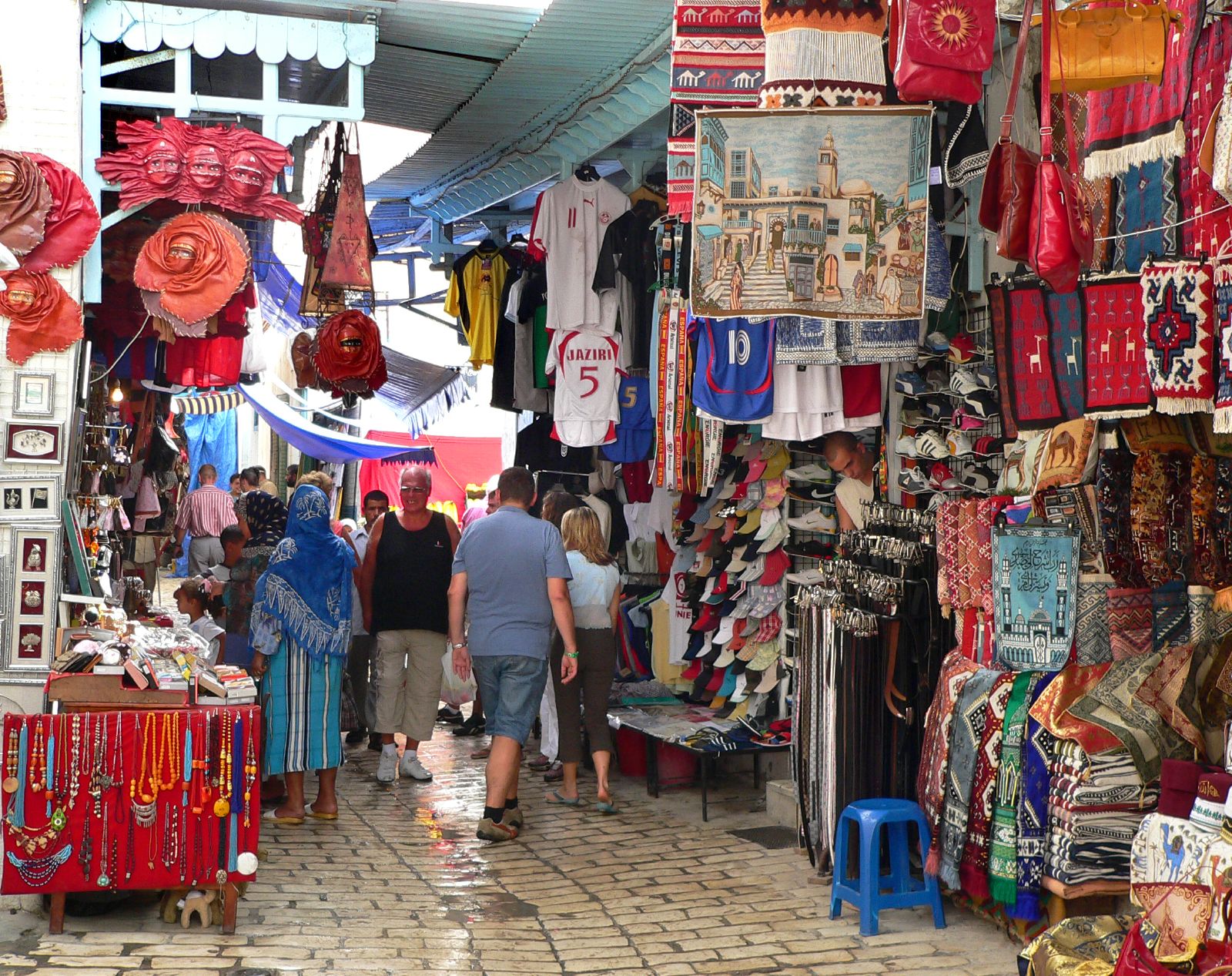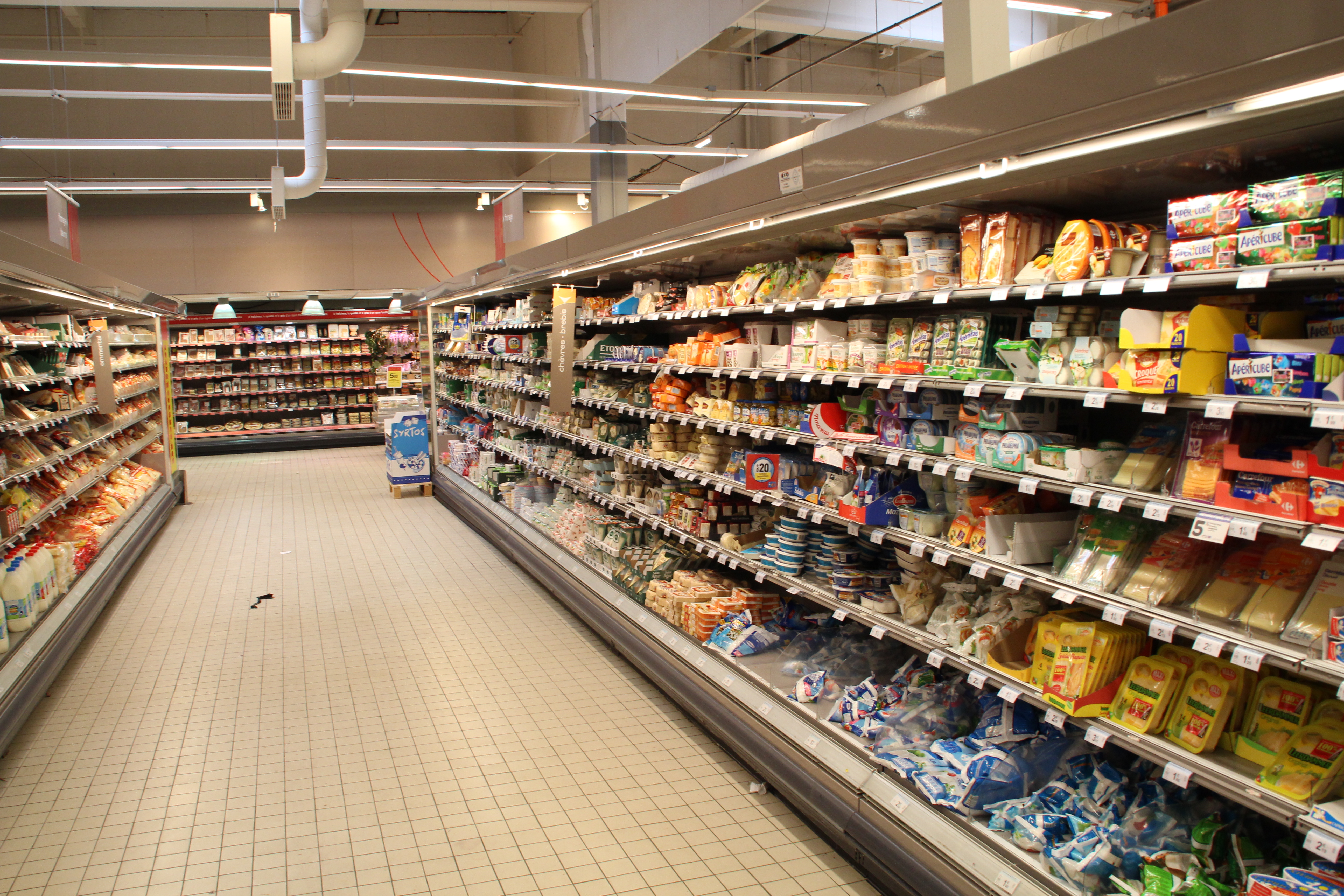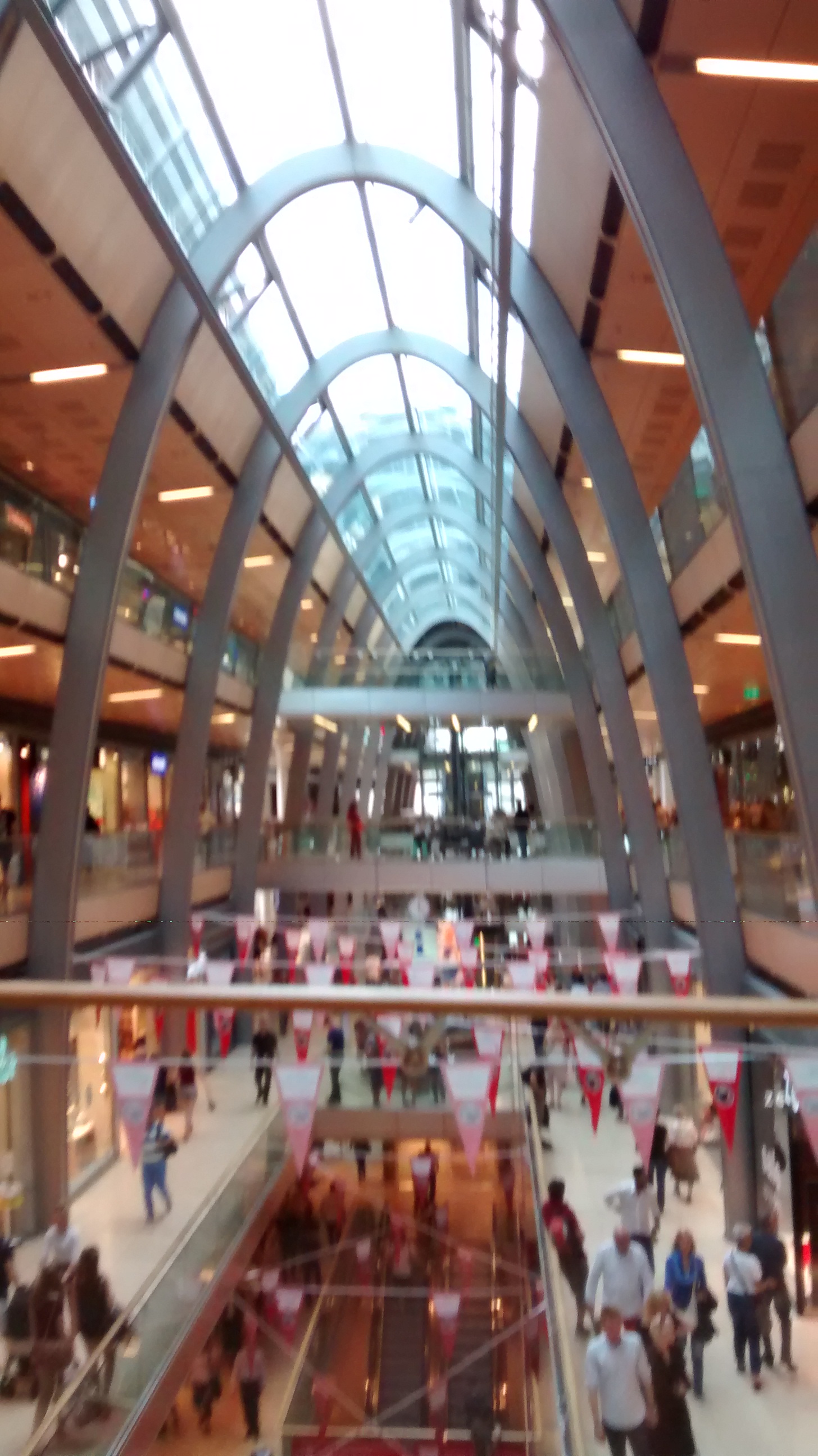|
Retail Therapy
Retail therapy is shopping with the primary purpose of improving the buyer's mood or disposition. Often seen in people during periods of depression or stress, it is normally a short-lived habit. Items purchased during periods of retail therapy are sometimes referred to as "comfort buys" (compare comfort food). The name ''retail therapy'' is ironic and semifacetious, acknowledging that shopping hardly qualifies as true therapy in the medical or psychotherapeutic sense. It was first used in the 1980s, with the first reference being this sentence in the ''Chicago Tribune'' of Christmas Eve 1986: "We've become a nation measuring out our lives in shopping bags and nursing our psychic ills through retail therapy." The fact that shopping may provide a short time of comfort (relief from dysphoria), but also imposes costs and is subject to comedown and withdrawal, make it, like opioid use, either a therapy or an addiction, depending on whether each person uses it adaptively or maladap ... [...More Info...] [...Related Items...] OR: [Wikipedia] [Google] [Baidu] |
Shopping
Shopping is an activity in which a customer browses the available goods or services presented by one or more retailers with the potential intent to purchase a suitable selection of them. A Retail#Shopper profiles, typology of shopper types has been developed by scholars which identifies one group of shoppers as recreational shoppers, that is, those who enjoy shopping and view it as a leisure activity.Jones, C. and Spang, R., "Sans Culottes, Sans Café, Sans Tabac: Shifting Realms of Luxury and Necessity in Eighteenth-Century France," Chapter 2 in ''Consumers and Luxury: Consumer Culture in Europe, 1650-1850'' Berg, M. and Clifford, H., Manchester University Press, 1999; Berg, M., "New Commodities, Luxuries and Their Consumers in Nineteenth-Century England," Chapter 3 in ''Consumers and Luxury: Consumer Culture in Europe, 1650-1850'' Berg, M. and Clifford, H., Manchester University Press, 1999 Online shopping has become a major disruptor in the retail industry as consumers ca ... [...More Info...] [...Related Items...] OR: [Wikipedia] [Google] [Baidu] |
Opioid
Opioids are substances that act on opioid receptors to produce morphine-like effects. Medically they are primarily used for pain relief, including anesthesia. Other medical uses include suppression of diarrhea, replacement therapy for opioid use disorder, reversing opioid overdose, and suppressing cough. Extremely potent opioids such as carfentanil are approved only for veterinary use. Opioids are also frequently used non-medically for their euphoric effects or to prevent withdrawal. Opioids can cause death and have been used for executions in the United States. Side effects of opioids may include itchiness, sedation, nausea, respiratory depression, constipation, and euphoria. Long-term use can cause tolerance, meaning that increased doses are required to achieve the same effect, and physical dependence, meaning that abruptly discontinuing the drug leads to unpleasant withdrawal symptoms. The euphoria attracts recreational use, and frequent, escalating recreational use of ... [...More Info...] [...Related Items...] OR: [Wikipedia] [Google] [Baidu] |
Buyer's Remorse
Buyer's remorse is the sense of regret after having made a purchase. It is frequently associated with the purchase of an expensive item such as a vehicle or real estate. Buyer's remorse is thought to stem from cognitive dissonance, specifically post-decision dissonance, that arises when a person must make a difficult decision, such as a heavily invested purchase between two similarly appealing alternatives. Factors that affect buyer's remorse may include: resources invested, the involvement of the purchaser, whether the purchase is compatible with the purchaser's goals, feelings encountered post-purchase that include regret. Causes The remorse may be caused by various factors, such as: the person purchased a product now rather than waiting, the item was purchased in an ethically unsound way, the property was purchased on borrowed money, the purchased object was something that would not be acceptable to others, or the purchased object was something that the buyer later questions t ... [...More Info...] [...Related Items...] OR: [Wikipedia] [Google] [Baidu] |
Window Shopping
Window shopping, sometimes called browsing, refers to an activity in which a consumer browses through or examines a store's merchandise as a form of leisure or external search behaviour without a current intent to buy. Depending on the individual, window shopping can be a pastime or be used to obtain information about a product's development, brand differences, or sale prices. The development of window shopping, as a form of recreation, is strongly associated with the rise of the middle classes in 17th and 18th century Europe. Glazing was a central feature of the grand shopping arcades that spread across Europe from the late 18th century. Promenading in these arcades became a popular 19th-century pastime for the emerging middle classes. Traditionally, window shopping involves visiting a brick-and-mortar store to examine the goods on display, but it is also done online in recent times due to the availability of the internet and e-commerce. A person who enjoys window shopping is k ... [...More Info...] [...Related Items...] OR: [Wikipedia] [Google] [Baidu] |
Melbourne University
The University of Melbourne is a public research university located in Melbourne, Australia. Founded in 1853, it is Australia's second oldest university and the oldest in Victoria. Its main campus is located in Parkville, an inner suburb north of Melbourne's central business district, with several other campuses located across Victoria. Incorporated in the 19th century by the colony of Victoria, the University of Melbourne is one of Australia's six sandstone universities and a member of the Group of Eight, Universitas 21, Washington University's McDonnell International Scholars Academy, and the Association of Pacific Rim Universities. Since 1872, many residential colleges have become affiliated with the university, providing accommodation for students and faculty, and academic, sporting and cultural programs. There are ten colleges located on the main campus and in nearby suburbs. The university comprises ten separate academic units and is associated with numerous institut ... [...More Info...] [...Related Items...] OR: [Wikipedia] [Google] [Baidu] |
Compulsive Buying Disorder
Compulsive buying disorder (CBD), or oniomania (from Greek ὤνιος ''ṓnios'' "for sale" and μανία ''manía'' "insanity"), is characterized by an obsession with shopping and buying behavior that causes adverse consequences. According to Kellett and Bolton, compulsive buying "is experienced as an irresistible–uncontrollable urge, resulting in excessive, expensive and time-consuming retail activity hat istypically prompted by negative affectivity" and results in "gross social, personal and/or financial difficulties". Most people with CBD meet the criteria for a personality disorder. Compulsive shopping is classified by ICD-10 (F63.8) as an "impulse control disorder, not otherwise classified." Several authors consider compulsive shopping rather as a variety of dependence disorder. History According to German physician Max Nordau, French psychiatrist Valentin Magnan coined the term "oniomania" in the 1892 German translation of his ''Psychiatric Lectures'' (''Psychiatrische ... [...More Info...] [...Related Items...] OR: [Wikipedia] [Google] [Baidu] |
Shopping Addiction
Shopping addiction is characterized by an eagerness to purchase unnecessary or superfluous things and a lack of impulse control when it comes to shopping. It is a concept similar to compulsive buying disorder (''oniomania''), but usually has a more psychosocial perspective, or is viewed as a drug-free addiction like addiction to gambling, Internet, or video-games. Behavioural manifestations There are three kinds of behavioural manifestations of shopping addiction, with different repercussions. These can be displayed together or independently and in more or less intense ways. Nevertheless, they are closely related and appear joined in people who seriously suffer from this disorder. First is the attraction towards the consumer stimulus, which is the addiction to purchasing as a leisure activity. This is about the uncontrolled and excessive draw to use shopping as a leisure activity, usually in an exclusive and overwhelming way. While activities such as window-shopping, visiting sh ... [...More Info...] [...Related Items...] OR: [Wikipedia] [Google] [Baidu] |
Maladaptation
In evolution, a maladaptation () is a trait that is (or has become) more harmful than helpful, in contrast with an adaptation, which is more helpful than harmful. All organisms, from bacteria to humans, display maladaptive and adaptive traits. In animals (including humans), adaptive behaviors contrast with maladaptive ones. Like adaptation, maladaptation may be viewed as occurring over geological time, or within the lifetime of one individual or a group. It can also signify an adaptation that, whilst reasonable at the time, has become less and less suitable and more of a problem or hindrance in its own right, as time goes on. This is because it is possible for an adaptation to be poorly selected or become more of a dysfunction than a positive adaptation, over time. Note that the concept of maladaptation, as initially discussed in a late 19th-century context, is based on a flawed view of evolutionary theory. It was believed that an inherent tendency for an organism's adaptations ... [...More Info...] [...Related Items...] OR: [Wikipedia] [Google] [Baidu] |
Adaptive Behavior
Adaptive behavior is behavior that enables a person (usually used in the context of children) to cope in their environment with greatest success and least conflict with others. This is a term used in the areas of psychology and special education. Adaptive behavior relates to everyday skills or tasks that the "average" person is able to complete, similar to the term life skills. Nonconstructive or disruptive social or personal behaviors can sometimes be used to achieve a constructive outcome. For example, a constant repetitive action could be re-focused on something that creates or builds something. In other words, the behavior can be adapted to something else. In contrast, maladaptive behavior is a type of behavior that is often used to reduce one's anxiety, but the result is dysfunctional and non-productive. For example, avoiding situations because you have unrealistic fears may initially reduce your anxiety, but it is non-productive in alleviating the actual problem in the lo ... [...More Info...] [...Related Items...] OR: [Wikipedia] [Google] [Baidu] |
Addiction
Addiction is a neuropsychological disorder characterized by a persistent and intense urge to engage in certain behaviors, one of which is the usage of a drug, despite substantial harm and other negative consequences. Repetitive drug use often alters brain function in ways that perpetuate craving, and weakens (but does not completely negate) self-control. This phenomenon – drugs reshaping brain function – has led to an understanding of addiction as a brain disorder with a complex variety of psychosocial as well as neurobiological (and thus involuntary) factors that are implicated in addiction's development. Classic signs of addiction include compulsive engagement in rewarding stimuli, ''preoccupation'' with substances or behavior, and continued use despite negative consequences. Habits and patterns associated with addiction are typically characterized by immediate gratification (short-term reward), coupled with delayed deleterious effects (long-term costs). Examp ... [...More Info...] [...Related Items...] OR: [Wikipedia] [Google] [Baidu] |





